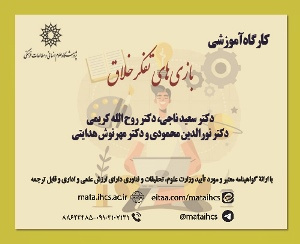تأثیر گفتمان اجتماعی حاکم بر عصر صفویان در آثار تصویری دارای صحنه های موسیقی آن دوره (مقاله علمی وزارت علوم)
درجه علمی: نشریه علمی (وزارت علوم)
آرشیو
چکیده
هر رشته از دانش، مجموعه ای از قواعد و قانون های ایجابی و سلبی را دارد که معین می کند درباره چه چیزهایی می توان بحث کرد و درباره چه چیزهایی، نمی توان. همین قواعد و قانون های نانوشته، ،"گفتمان" آن رشته خاص هستند. تلاقی مذهب و ملیت در گفتمان صفوی باعث شد تا پس از ساسانیان، دوباره وحدت دینی مبنای وحدت سیاسی قرار گیرد و هویت ملی در ایران پررنگ شود . گفتمانی که با برجسته کردن، طرد و گاه به حاشیه راندن، تفکر غالب خود را به عنوان حکومتی قدرتمند گسترش داد. در این پژوهش تلاش شده تا تأثیر گفتمان اجتماعی این عصر -که علاوه بر اندیشه های سیاسی حاکم، به سه بخش مذهب شیعه، حکمت ایران باستان و عرفان اسلامی قابل تقسیم است- بر نگاره های دارای صحنه های موسیقی بررسی شود. در این پژوهش توصیفی-تحلیلی، برای تحلیل داده ها از نظریه گفتمان "میشل فوکو" استفاده شده است. پررنگ ترین نتیجه ای که می توان از این بررسی گرفت این است که، با تمام نفوذ و قدرتی که مذهب شیعه و فلاسفه و عرفای اسلامی در عصر صفوی داشتند، تأثیر مستقیم اندیشه های سیاسی دولت بر نگارگری و استفاده دیداری از واقعیت های اجتماعی در طراحی صحنه های دارای موسیقی مشهود است.The Effect of the Social Dialogue Governing the Safavid Age in the Visual Works of the Music Scenes of that Period
Every field of knowledge in a particular period of history has a collection of necessitating and depriving laws and rules, which determines about what you can discuss and about what cannot enter the discussion. This unwritten laws and rules, which at the same time ruling on any speech and writing, are "discourse" of that particular field in that particular historical period. In the ninth century Sufis movement emerged as powerful political sovereignty in Iran and established a new government named Safavie kingdom; anew emergence of Iran as an independent political unit in Safavie era was a struggle to retrieve a national identity before Islam. The Safavid dynasty created a new era in Iran history by formalizing the Shia religion in Iran and settling it as a religion of the majority of people. “In the point of view of this era historians, religion constitution and spirituality were not an independent phenomenon from the government”. Because of a relation that historians had with the court and also moral and material centralization policies of Safavi king, they paid less attention to independence and existence of religious constitution and spirituality. According to the dominant discourse of Shia in Safavie era, for consolidation and expansion of the Shiite spontaneously, Shia king invited them to himself in spite of power and glory but there were serious signs of conflict and inconsistency between these two. A major difference between Safavi nationalism and its earlier period was in a role of "Shia" religion in the new identity that this time was responsible for. The confluence of religion and nationality in Safavi discourse caused religious unity be basis of political unity and national identity in Iran after about nine hundred years after the Sasanian government. A discourse which by highlighting, rejecting and marginalizing spread its dominant thought with a name of powerful government against the Ottoman Caliphate and other competitorA recession that had started since the eighth century, in Safavi era Speeded up. This haste was largely as result of Shia religion formalization and its gripping through court policies as well as increasing penetration among the public that gradually caused loss of Sufis. Due to the unfavorable social conditions in this era, Safavi kings used Shia religion as means of their purposes. . In this research has attempted to study the influence of social discourse of this era -that in addition to the ruling political thoughts can be Divided to three sections, Shia religion, ancient Iran philosophy and Islamic mysticism- on figures including music scene. This research is carried out through descriptive-analytical method and its data was collected through documentary method and for analyzing the data, the "Michel Foucault" discourse theory was used as a theoretical framework. The result of this study is that by all power and influences that Shia religion and philosophers and Islamic mystics had in the safavi era particularly in first shah abbas, the direct impact of government political thoughts on miniature and visual usage of social realities is obvious in designing scenes including music.





